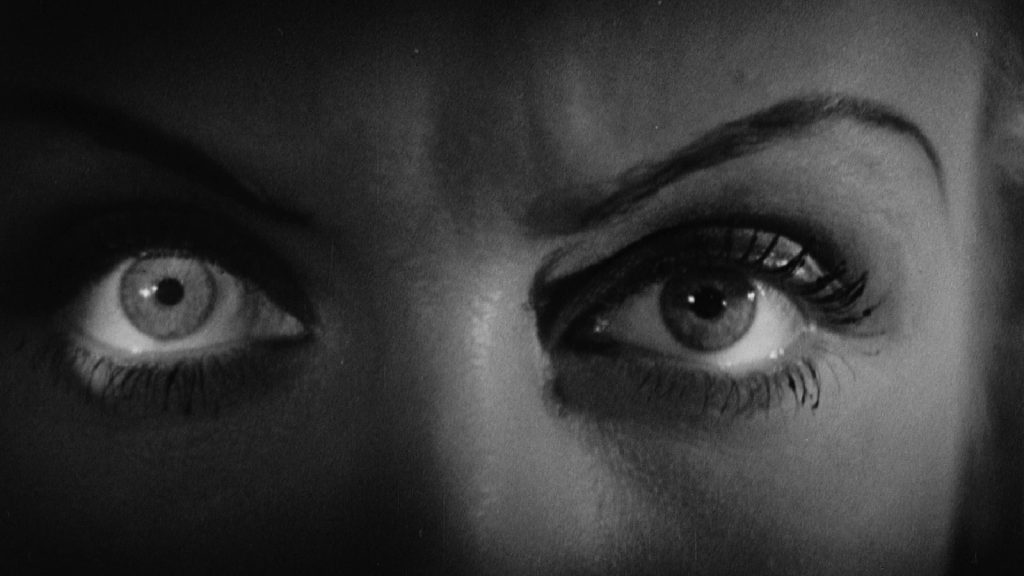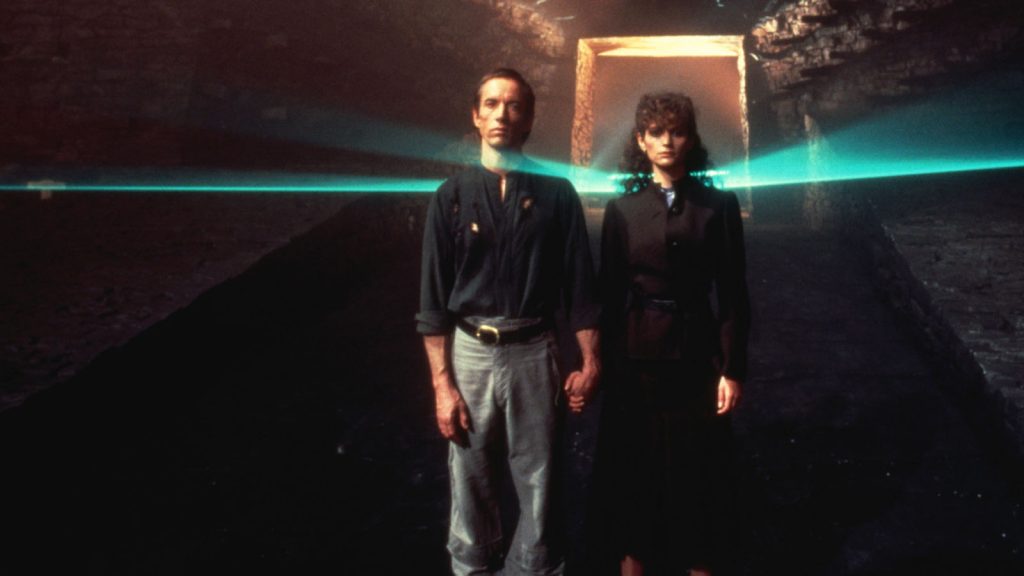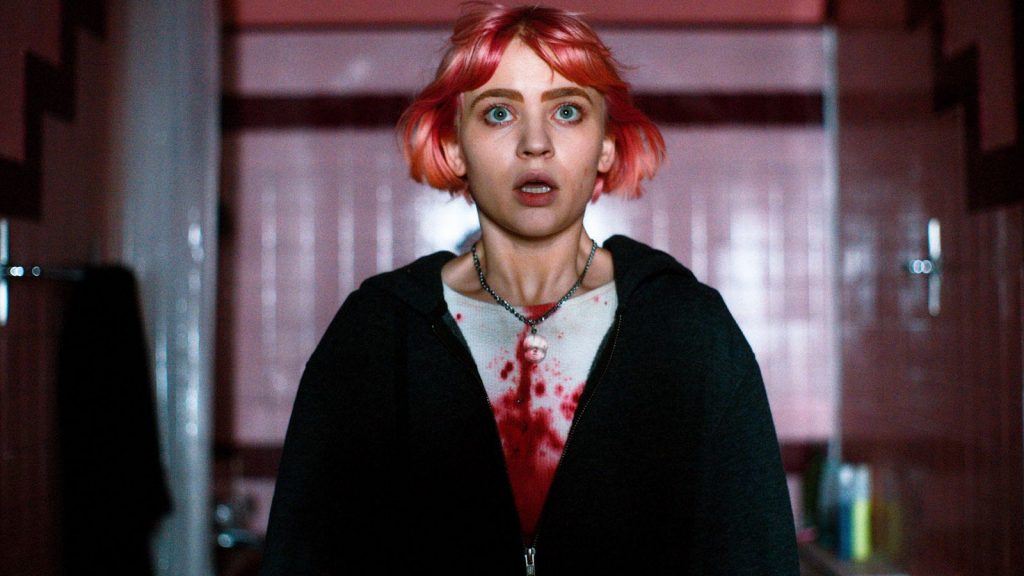
“Do you know what’s going to happen?”
“Yes.”
Jean Rollin’s debut, The Rape of the Vampire, was the only film to premiere in Paris during the May 1968 riots, and Rollin’s destiny as a director was irrevocably sealed. He was a laughingstock in critical circles; commercially, he was doomed to work in softcore Europorn, shut out from his New Wave peers. Any artistry in his vampire films feels snuck in under the aegis of pornography. Rollin’s artistic instincts and the compromises he made for money are so close as to be indistinguishable. These vampire tales are minimalist drone performance pieces as much as they are films. They’re also old-fashioned and melancholy, but it is inextricable from the era in which they were made (1967-82), their feverish lysergic qualities in particular. You cannot have Rollin without acid—his hypnotic surrealist reveries are not playful as much as they are entrancing.
The narrative beats of the lesbian vampire movie have their roots in both commerce and the literary—many, many of these function as an adaptation of Sheridan Le Fanu’s 1872 novella Carmilla. Beginning with Roger Vadim’s Blood and Roses (1960), these films involve limited actors, geographic isolation, a female vampire seducing a woman away from her cuckold husband, extended sex scenes, and extravagant gore. They also embody a tradition of surrealist images, hypnotic silent passages, psychedelic dialogue, and nostalgia for a lost antiquity, with images of drowning bodies, dilapidated Gothic castles implying a rot at the core of modern life.
Lesbian sex in Rollin’s work is seen as a fallen, abject act. It is not natural; it is a tragic alluring away from the natural. The Living Dead Girl changes that dynamic by having these women love each other in an absolute, uncomplicated way. The situation (having to kill to live) is the problem, not their love.
The romance of The Living Dead Girl is paramount. It is so pure a love that the film never seeks to deviate from it in pursuit of narrative l’amour fait mal. A toxic-waste spill in an abandoned crypt causes Catherine Valmont (Françoise Blanchard) to awake two years after death and feed only on human blood. Hélène (Marina Pierro) calls the estate and hears the music box they shared as children, and she instantly knows Catherine is alive. Catherine slowly regains her consciousness, though early on she is in a nonverbal reverie. The tragedy is that Hélène’s desperate need to keep Catherine alive twists her into a monster who will murder anyone just to keep Catherine near her. As she begins to speak articulately, she tells Hélène exactly what she is (dead, evil).

Hélène and Catherine’s love is delivered as pure to the point of almost being chaste. In keeping with Rollin’s nostalgic melancholia, the young girls commingle their blood in a pitcher and say that whoever dies first, the other will follow. These characters are nakedly their feelings. The reason Hélène is so quick to act is she feels guilt for not keeping her vow to follow her lover into death. Catherine’s arc is an awareness that her very existence is an aberration. She knows she is dead, and her very existence is destroying the woman she loves as Hélène goes from disposing of bodies to tying up and torturing teenage girls.
Catherine’s methods of killing are so specifically lesbian-coded—she shoves her razor-sharp fingernails through eyes, piercing throats, into tongues followed by a blood-soaked kiss. She tears out throats and stomachs. Her hands and mouth are the tools of erotically charged violence, not her teeth. Her appearance—long blonde hair, childlike white Gunne Sax dress—only accentuates the savagery of her gestures. Of course, the gayest of Rollin’s lesbian films has the least girl-on-girl sex.
The Living Dead Girl meets the furthest extremes of both the prurient and the romantic qualities of Rollin’s work—never have you felt so much for his characters as Catherine and Hélène; never has he been as blatant as the arterial-spray-as-cumshot between the real estate agent and her weaselly boyfriend. The cinema that The Living Dead Girl is closest to is Georges Franju’s restrained and doomed Eyes Without a Face (matching several of the same emotional beats). The Living Dead Girl emotionally resonates closer to the self-immolation romances of Wong Kar Wai (In the Mood for Love, Happy Together, As Tears Go By). One gets the sense that being in love is the thing that is tearing these two apart, not keeping them together.
Catherine and Hélène’s final embrace is the entire story in miniature—desperate to die, she begs Hélène to let her go. In a rare head-on POV composition, Hélène tells her she cannot do that. “Hélène, I am your death.” Catherine then attacks her more ferociously than we’ve seen—biting her throat, tearing at it, rending her stomach open, her wrist, her thumb—it’s disgusting, yet she refuses to look away. Finally, Hélène is drenched in her true love’s blood, it pooling in eddies on the stairs. She wails, realizing what she has done. Hélène gave her everything she thought she had to, and now Catherine is alive and in agony, alone and torn in half by love.

is a writer and filmmaker living in Brooklyn.
While Carmilla is the primary historical source for 90 percent of the lesbian vampire movie, there are many for the vampire in general...
BY LAURA WYNNE | July 28, 2025
Though recent events have redefined masks as symbols of caution and courtesy, their role in the horror pantheon is steadfastly sinister. From the myriad Phantoms of the Opera to...
BY STEVEN MEARS | November 2, 2024
It was Ingmar Bergman’s The Seventh Seal (1957) that inspired Stephanie Rothman to make movies. She studied filmmaking at the University of Southern California, became the first woman...
BY JOSÉ TEODORO | February 12, 2024

This pre-Code offering packs a lot of story into its typically brisk running time, with several plot threads weaving together a (not always successful) tapestry of spooky and criminal doings.
READ MORE >
BY ANN OLSSON | Month 00, 2021

In what could be the fastest-resulting rape revenge movie, a drunken lout brutally forces himself on Ida, the young woman who doesn't return his affections, during a party over Labor Day.
READ MORE >
BY LAURA KERN | Month 00, 2021

Beast is a lot of movies in one package - fractured fairy tale, belated-coming-of-age story, psychological drama, regional horror film - but above all it's a calling card for its leading lady, Jessie Buckley.
READ MORE >
BY LAURA KERN | Month 00, 2021